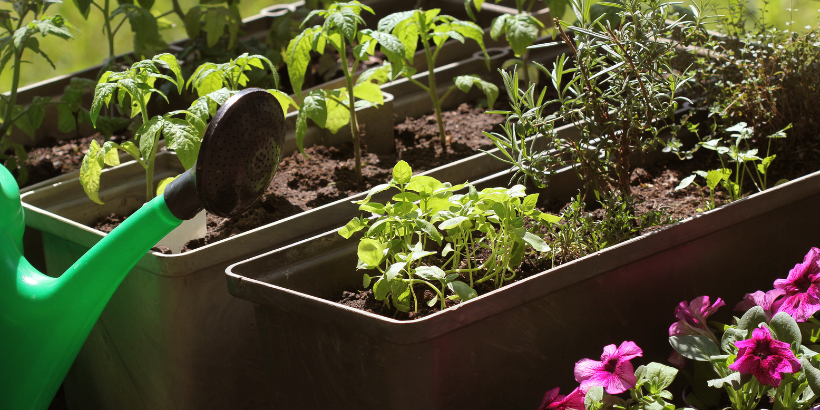Recognizing the Different Sorts Of Gardening and Just How They Add to a Healthier Way Of Living and Environment

Benefits of Veggie Gardening
Lots of individuals are significantly identifying the myriad benefits of veggie gardening as an essential part of a much healthier way of life. Engaging in veggie horticulture uses many physical health advantages, consisting of boosted exercise, which boosts cardiovascular wellness and advertises total health and fitness. The act of growing, weeding, and harvesting needs activity and can help battle sedentary behaviors, contributing to weight management and enhanced muscle mass tone.
Furthermore, cultivating one's own veggies dramatically boosts dietary top quality. Organic fruit and vegetables is frequently fresher and much more nutrient-dense contrasted to store-bought choices, as it can be taken in quickly after harvest. This accessibility motivates a higher intake of vegetables and fruits, which are important for preventing chronic conditions.
In addition, veggie gardening cultivates mental health by giving a healing electrical outlet for stress relief and relaxation. Collectively, these advantages underscore the significance of vegetable horticulture as a cornerstone of a much healthier way of living.
Exploring Blossom Horticulture
In addition to visual benefits, flower horticulture supports regional environments. Numerous flowering plants bring in pollinators, such as bees and butterflies, which are crucial for preserving biodiversity. The existence of diverse vegetation can additionally boost dirt wellness, as numerous plants add to nutrient cycling and boost dirt structure.
Moreover, flowers can play a significant duty in promoting sustainable methods. Several gardeners choose for native or drought-resistant species, which need much less water and minimal chemical inputs. This technique not only benefits the atmosphere yet also motivates accountable gardening behaviors.
Eventually, flower horticulture works as an important component of an all natural horticulture approach. Gardening. By growing appeal and sustaining regional ecosystems, it harmonizes with veggie horticulture and underscores the value of nurturing both our physical and psychological wellness with nature
Container Horticulture Benefits
Container gardening deals many advantages that make it an attractive alternative for both novice and experienced garden enthusiasts. Among the main benefits is its versatility; containers can be positioned on patios, porches, or also inside your my website home, enabling gardening in rooms with restricted ground accessibility. This versatility enables people in metropolitan atmospheres or those with small yards to grow plants effectively.
In addition, container gardening supplies enhanced control over soil high quality and wetness levels. Garden enthusiasts can choose specific dirt mixes to maximize plant health and wellness and mitigate problems like weeds and insects. The flexibility of containers additionally permits for very easy relocation to maximize sunlight direct exposure or secure plants from stormy climate.
Additionally, container yards can be aesthetically pleasing, providing an opportunity for imagination in layout. Gardening. They can function as attractive aspects that enhance outdoor or indoor areas while promoting biodiversity by attracting pollinators
Lastly, container gardening can add to a healthier lifestyle by encouraging exercise, as it usually includes lifting, planting, and keeping plants. Overall, the benefits of container gardening make it an easily accessible and fulfilling method for those looking for to enhance their lifestyle and setting.
The Surge of Upright Gardening
As city areas become increasingly crowded, the fad of upright horticulture has removed, permitting people to maximize their gardening potential in minimal areas. This innovative technique entails growing plants in vertical structures, such as wall-mounted planters, trellises, or specialized upright yard systems. The appeal of upright horticulture exists not just in its reliable use space yet likewise in its visual contribution to metropolitan environments, transforming bare wall surfaces right into lush green landscapes.
Vertical gardens can be installed in homes, terraces, and neighborhood areas, providing a system for expanding a range of plants, consisting of herbs, vegetables, and ornamental flowers. This approach encourages biodiversity and can enhance air high quality by filtering system pollutants while promoting a connection to nature in largely inhabited locations. Furthermore, upright gardening supplies functional benefits, such as boosted yield per square foot, making it an appealing option for urban gardeners looking for to expand their own food.

Sustainable Practices in Horticulture
Accepting sustainable techniques in horticulture is vital for promoting ecological wellness and making sure the feasibility of our natural deposits. Lasting horticulture strategies concentrate on decreasing ecological effect, conserving water, and fostering biodiversity. By applying practices such as natural gardening, garden enthusiasts can reduce making use of synthetic plant click foods and chemicals, which can damage neighborhood ecological communities.
Companion planting is one more efficient sustainable approach, where particular plants are expanded together to boost growth and deter insects normally. Additionally, utilizing indigenous plants in landscaping visit the website supports local wildlife and needs less upkeep, as they are naturally adjusted to the local environment and dirt problems.
Water preservation methods, such as rain harvesting and drip watering, assistance to successfully handle water sources, therefore decreasing waste. Composting natural waste not only improves the dirt but likewise minimizes garbage dump payments, promoting a circular economy.
Last but not least, exercising crop turning and cover cropping improves soil wellness and minimizes the risk of parasite problems. By integrating these lasting methods, gardeners can produce resistant environments that contribute to a much healthier way of life while securing the atmosphere for future generations.
Conclusion

In verdict, the varied approaches of horticulture, consisting of vegetable, flower, container, and upright horticulture, jointly promote a much healthier way of life and improve environmental sustainability. Each type supplies distinct benefits, from giving fresh produce and attracting pollinators to enhancing minimal areas and motivating biodiversity. By cultivating sustainable techniques, these gardening comes close to not only add to specific wellness but additionally sustain more comprehensive ecological conservation efforts, eventually minimizing dependence on business agriculture and enhancing neighborhood strength.